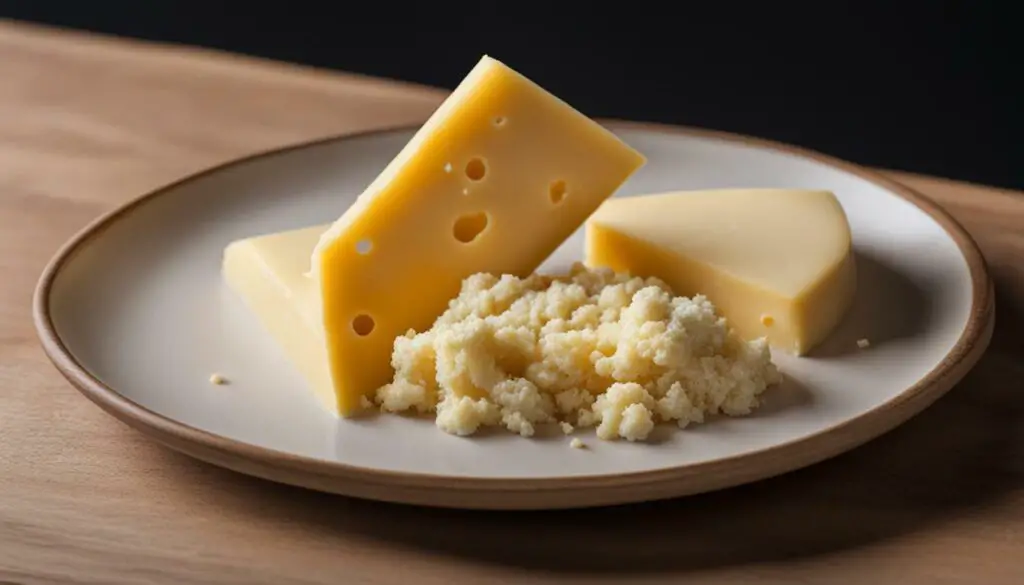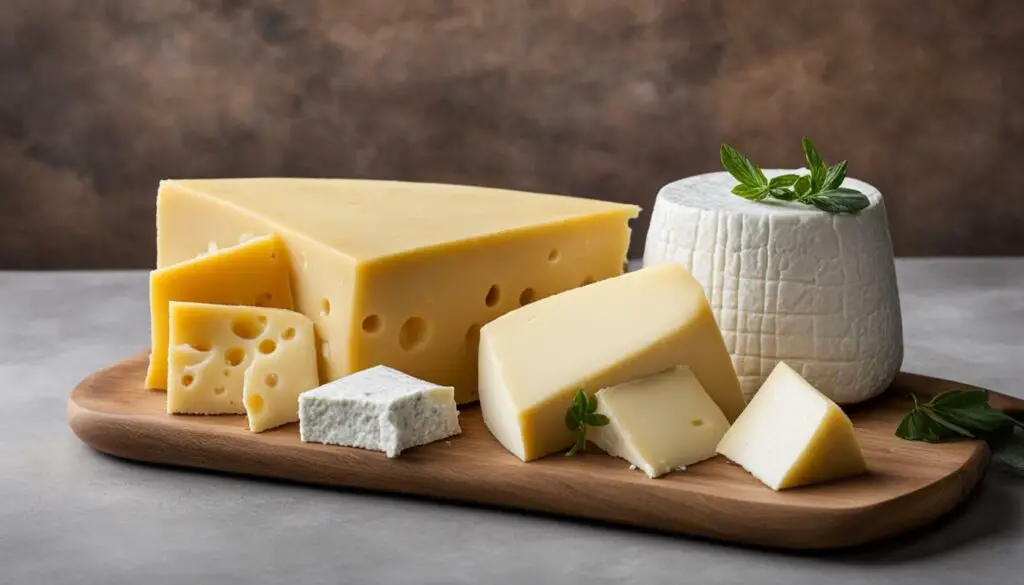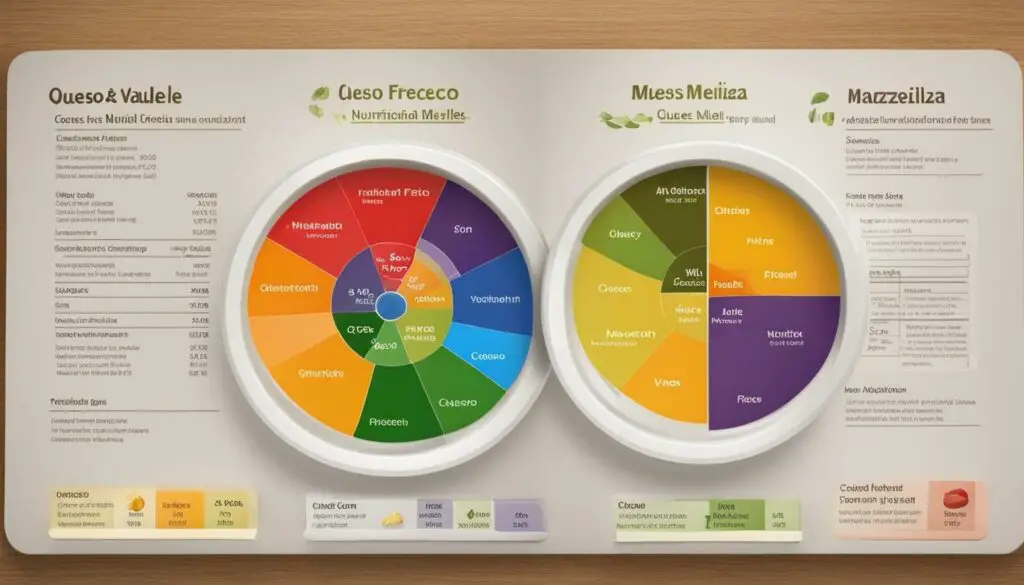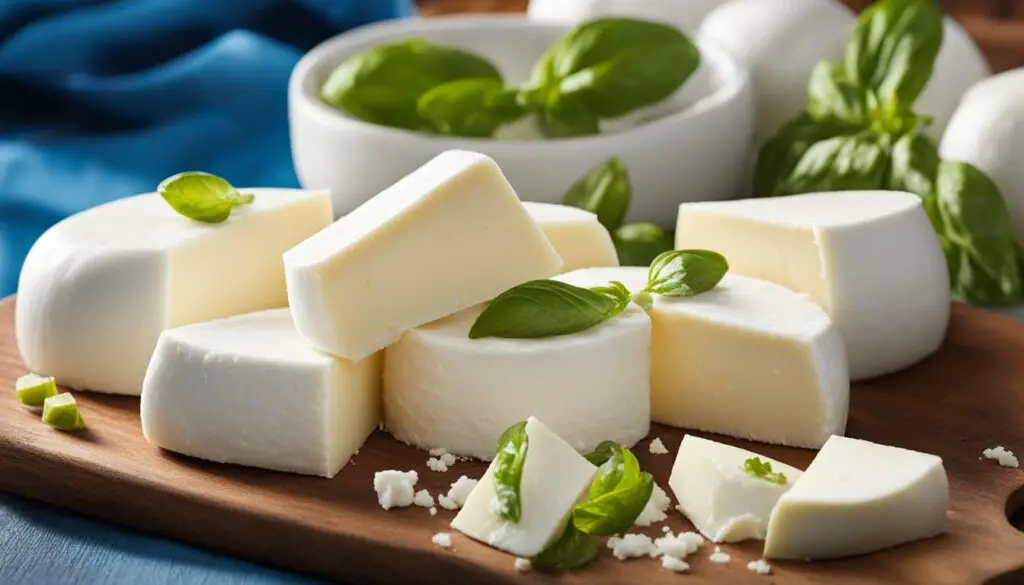Queso fresco and mozzarella are two distinct types of cheese that offer unique flavors and characteristics. While they may share similarities as popular choices in the dairy aisle, their differences set them apart in terms of taste, texture, and culinary uses. So which to use for what? lets look at Queso Fresco vs Mozzarella.
Key Takeaways: Queso Fresco vs Mozzarella
Contents
- 1 Flavor and Texture
- 2 Culinary Uses
- 3 Unique Uses and Benefits
- 4 Find out more about Queso Fresco
- 5 Can You Freeze Queso Fresco? Our Guide to Proper Storage
- 6 Is Queso Fresco Healthy? Unveiling the Truth | Our Discovery.
- 7 Oaxaca Cheese vs Queso Fresco: Unveiling the Delicious Mystery
- 8 Understanding Queso Fresco in English – A Cheesy Delight!
- 9 Queso Fresco Vs Feta: Unveiling the Cheesy Differences
- 10 Discover How to Store Queso Fresco with Our Easy Tips!
- 11 Unraveling the Mystery: Does Queso Fresco Melt?
- 12 Finding the Perfect Substitute for Queso Fresco – Your Guide
- 13 FAQ
- Queso fresco has a tangier, bolder flavor, while mozzarella has a milder taste.
- Queso fresco is softer and crumbly, while mozzarella is drier and becomes stringy when heated.
- Queso fresco is commonly used in Mexican cuisine, while mozzarella is a staple in Italian dishes.
- The nutritional profiles of queso fresco and mozzarella differ in terms of calorie, fat, protein, calcium, sodium, and vitamins.
- Both cheeses have their own unique uses and offer specific health benefits.
Now, let’s dive deeper into the distinct flavors, textures, culinary uses, and nutritional profiles of queso fresco and mozzarella.
Flavor and Texture
Queso fresco has a tangier and bolder flavor profile compared to the milder taste of mozzarella. Its unique taste adds a distinct kick to dishes, making it a popular choice in Mexican cuisine. In contrast, mozzarella has a more subtle flavor that blends well with a variety of ingredients, making it a versatile cheese in Italian dishes.
When it comes to texture, queso fresco is softer and crumbly, while mozzarella has a drier consistency. Queso fresco retains its shape even when heated, making it ideal for grilling or frying. On the other hand, mozzarella melts easily and becomes delightfully stringy, perfect for topping pizzas or creating that gooey, cheesy pull.
Melting Points: An Important Distinction
One key difference between queso fresco and mozzarella is their melting points. While queso fresco will soften when heated, it won’t fully melt like mozzarella. This is because queso fresco is made from fresh cheese curds, which have a higher moisture content. Mozzarella, on the other hand, is made from stretched curd, giving it its characteristic stretchiness and meltability.
When cooking, it’s important to consider these melting points. Queso fresco is best used as a topping or filling for dishes that don’t require extensive melting, such as tacos or salads. Mozzarella, with its superior melting properties, is perfect for creating that ooey-gooey texture in dishes like lasagna or baked ziti.

Understanding the flavor and texture differences between queso fresco and mozzarella helps us appreciate the unique qualities each cheese brings to our culinary creations. Whether you’re craving the tanginess of queso fresco in a zesty Mexican dish or the creamy melt of mozzarella on your favorite Italian pizza, these cheeses offer a world of delicious possibilities. So go ahead and savor the flavors, experimenting with these cheeses in your own kitchen!
Culinary Uses
Queso fresco is a staple in Mexican cuisine, frequently used in dishes like tacos and beans. Its crumbly and creamy texture adds a delicious touch to these traditional dishes. The tangy and bold flavor of queso fresco enhances the overall taste and brings authenticity to Mexican cuisine. Whether sprinkled on top of tacos or melted into beans, queso fresco adds a unique and satisfying element.
Mozzarella, on the other hand, is popularly used in various Italian dishes, particularly in pizzas and pastas. Its smooth and stretchy texture creates that iconic cheese pull when melted. With its mild and creamy taste, mozzarella complements the rich flavors of Italian cuisine. From classic Margherita pizzas to baked pasta dishes, mozzarella adds a gooey and comforting element that Italians love.
Unique Culinary Pairings
Queso fresco can also be enjoyed beyond Mexican cuisine. Its crumbly and slightly salty taste pairs well with fruity flavors, making it a great addition to salads or fruit platters. Try crumbling some queso fresco over a watermelon and mint salad for a refreshing and savory twist.
On the other hand, mozzarella’s versatility extends beyond Italian cuisine as well. Its mild and creamy flavor pairs beautifully with tomatoes and basil, making it a key ingredient in the classic Caprese salad. Drizzle some olive oil and balsamic glaze over sliced tomatoes, fresh mozzarella, and basil leaves for a simple yet flavorful appetizer.
Both queso fresco and mozzarella have their own unique culinary uses that add depth and flavor to a wide range of dishes. Whether you’re cooking up a Mexican feast or an Italian delicacy, these cheeses are sure to elevate your culinary creations to the next level.

Queso fresco and mozzarella offer distinct nutritional profiles, varying in calorie content, fat content, protein content, calcium content, sodium content, and vitamin composition. Let’s take a closer look at the nutritional differences between these two popular cheeses:
- Calorie Content: Queso fresco typically contains around 100 calories per ounce, while mozzarella has approximately 85 calories per ounce. If you’re watching your calorie intake, opting for mozzarella might be a slightly lighter choice.
- Fat Content: Queso fresco is known for its lower fat content, with about 6 grams per ounce, while mozzarella contains around 6-7 grams of fat per ounce. If you’re looking to reduce your fat intake, queso fresco could be a better option.
- Protein Content: Both cheeses are good sources of protein, but mozzarella takes the lead with approximately 6-7 grams of protein per ounce, compared to 4-5 grams in queso fresco. If you’re looking to increase your protein intake, mozzarella might be a better choice.
- Calcium Content: Both cheeses are rich in calcium, an essential mineral for bone health. However, queso fresco typically contains slightly more calcium, with around 200 milligrams per ounce, while mozzarella has approximately 150 milligrams per ounce.
- Sodium Content: Queso fresco tends to have lower sodium levels compared to mozzarella. While queso fresco contains around 150-200 milligrams of sodium per ounce, mozzarella can have up to 200-400 milligrams per ounce. If you’re watching your sodium intake, queso fresco may be a better option.
In terms of vitamins, both cheeses offer their own unique profiles. Queso fresco is a good source of vitamin A and vitamin B12, while mozzarella is higher in vitamin B6. Both cheeses also provide small amounts of other vitamins such as vitamin D and vitamin E.

It’s important to note that nutritional values may vary depending on the brand and specific preparation of these cheeses. Always check the nutrition labels for accurate information.
Tip:
If you’re looking for a lower calorie and lower fat option, queso fresco can be a good choice. On the other hand, if you’re seeking more protein and calcium, mozzarella might be the way to go. Incorporating both cheeses into your diet can provide a variety of flavors and nutritional benefits.
Unique Uses and Benefits
Both queso fresco and mozzarella have their unique uses in various dishes and offer nutritional benefits that cater to different dietary needs. Let’s explore their distinct characteristics.
- Queso fresco: This creamy, crumbly cheese is a staple in Mexican cuisine. Its tangy flavor adds a delicious kick to traditional dishes like tacos, enchiladas, and quesadillas. Queso fresco also pairs well with beans, salads, and grilled vegetables, providing a refreshing contrast to the bold flavors of Mexican spices.
- Mozzarella: Known for its stretchy texture and mild taste, mozzarella is a versatile cheese that shines in Italian dishes. It melts beautifully and becomes pleasantly gooey when heated, making it ideal for pizza, lasagna, and baked pasta dishes. Mozzarella also complements fresh tomatoes and basil in the classic Caprese salad, offering a mild, creamy component to balance the vibrant flavors of the other ingredients.
Now let’s talk about the nutritional benefits of these cheeses.
“Cheese is a good source of calcium, protein, and other essential nutrients.”
Queso fresco is relatively low in calories and fat, making it a suitable option for those watching their intake. It is also a good source of calcium, supporting bone health and teeth strength. Mozzarella, on the other hand, is slightly higher in calories and fat but still offers valuable protein and calcium. It contains less sodium compared to other cheeses, making it a healthier choice for individuals looking to reduce their sodium intake.
Did you know?
Cheese in general, including queso fresco and mozzarella, provides significant amounts of vitamin B12, which plays a crucial role in the production of red blood cells and the proper functioning of the nervous system.
Next time you’re planning a meal, consider incorporating queso fresco or mozzarella to elevate the flavors and nutritional value of your dishes. Whether it’s the tangy goodness of queso fresco in Mexican favorites or the melty, creamy texture of mozzarella in Italian classics, these cheeses are sure to add a delicious touch to your culinary adventures.

To conclude, queso fresco and mozzarella are both versatile cheeses with unique characteristics that can elevate different cuisines and dishes. Queso fresco, with its tangier and bolder flavor, provides a distinct taste that pairs well with traditional Mexican dishes such as tacos and beans. Its softer texture adds a creamy element to these dishes, enhancing their overall experience. On the other hand, mozzarella brings its own set of qualities to the table. It is drier in nature and melts easily, resulting in that classic stringy goodness when heated. This makes mozzarella an ideal choice for Italian favorites like pizza and pasta dishes.
Not only do these cheeses differ in flavor and texture, but they also vary in their nutritional profiles. Queso fresco typically has a slightly higher calorie content than mozzarella, along with a higher fat and sodium content. However, it also contains more calcium, protein, and a diverse vitamin profile. This makes queso fresco a good source of essential nutrients, while mozzarella offers a lighter option with less sodium and fat.
Both queso fresco and mozzarella have their own unique uses beyond their traditional culinary applications. Queso fresco can be crumbled over salads or roasted vegetables for added texture and flavor. Its tanginess also complements the sweetness of fruits like watermelon or pineapple, creating a delightful contrast. Meanwhile, mozzarella can be sliced and paired with fresh tomatoes and basil for a classic Caprese salad. Its melting properties make it an excellent choice for stuffed dishes like calzones or breaded and fried as a tasty appetizer.
Whether you’re a fan of queso fresco or mozzarella, these cheeses offer a range of flavors and textures that can enhance various cuisines and recipes. From the bold and creamy profile of queso fresco to the melty and stringy goodness of mozzarella, each cheese brings its own unique charm to the table. So, next time you’re in the kitchen, consider these delightful cheeses and elevate your dishes with their distinct characteristics.
Find out more about Queso Fresco
FAQ
Q: What is the difference between queso fresco and mozzarella?
A: Queso fresco has a tangier, bolder flavor and is softer, while mozzarella is drier, melts easily, and becomes stringy when heated.
Q: What cuisines are queso fresco and mozzarella commonly used in?
A: Queso fresco is commonly used in Mexican dishes like tacos and beans, while mozzarella is often used in pizza and pasta dishes.
Q: How do queso fresco and mozzarella differ nutritionally?
A: Queso fresco and mozzarella differ in their calorie content, fat content, protein content, calcium content, sodium content, and vitamin profile.
Q: What are the unique uses and benefits of queso fresco and mozzarella?
A: Both cheeses have their own unique uses and provide specific nutritional benefits, such as being a good source of calcium or protein.
